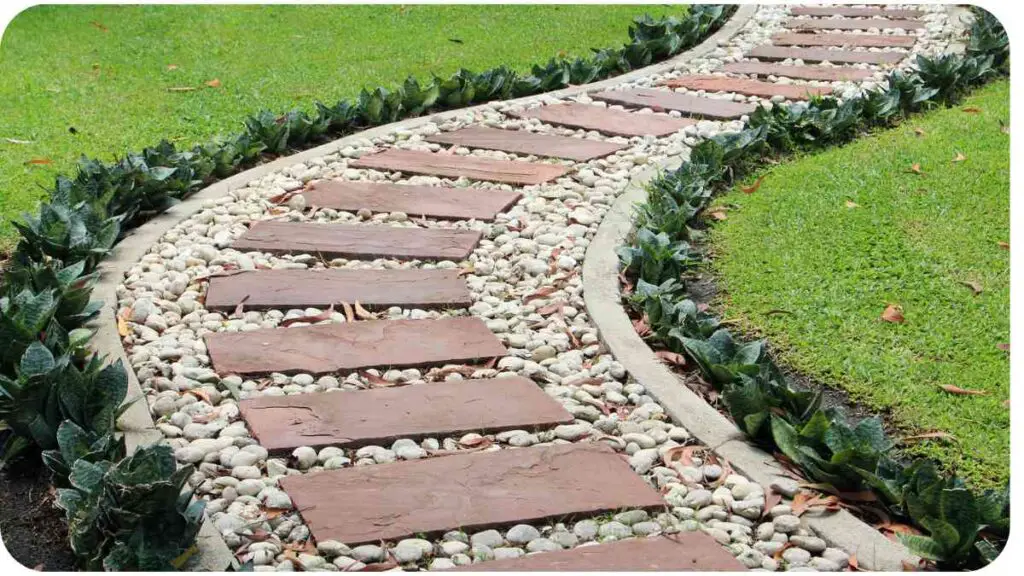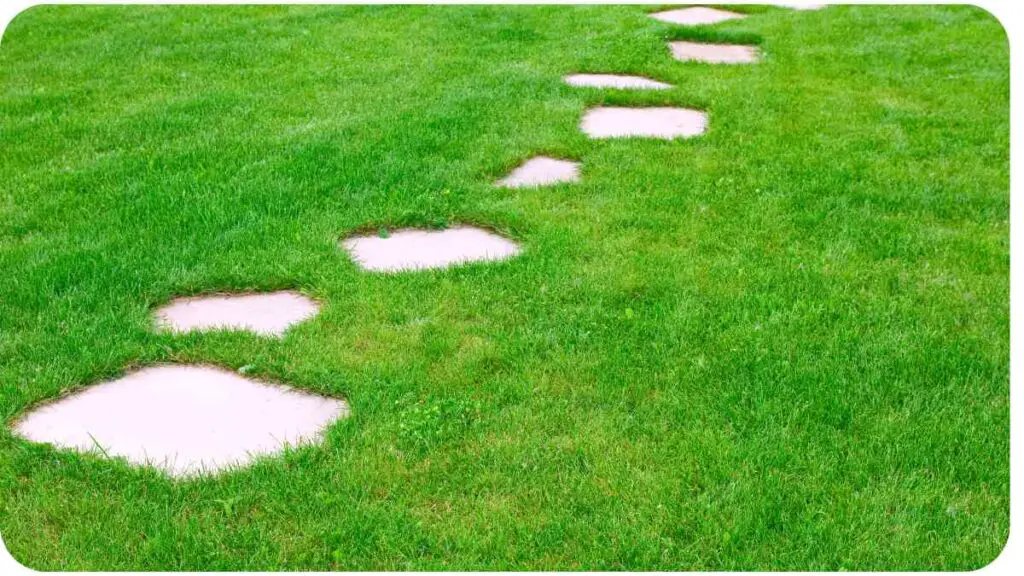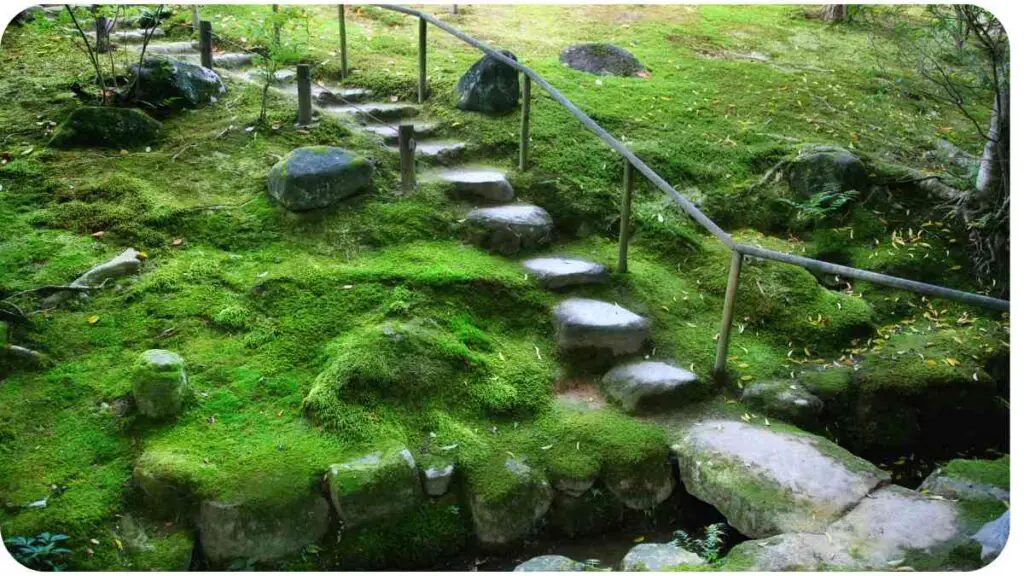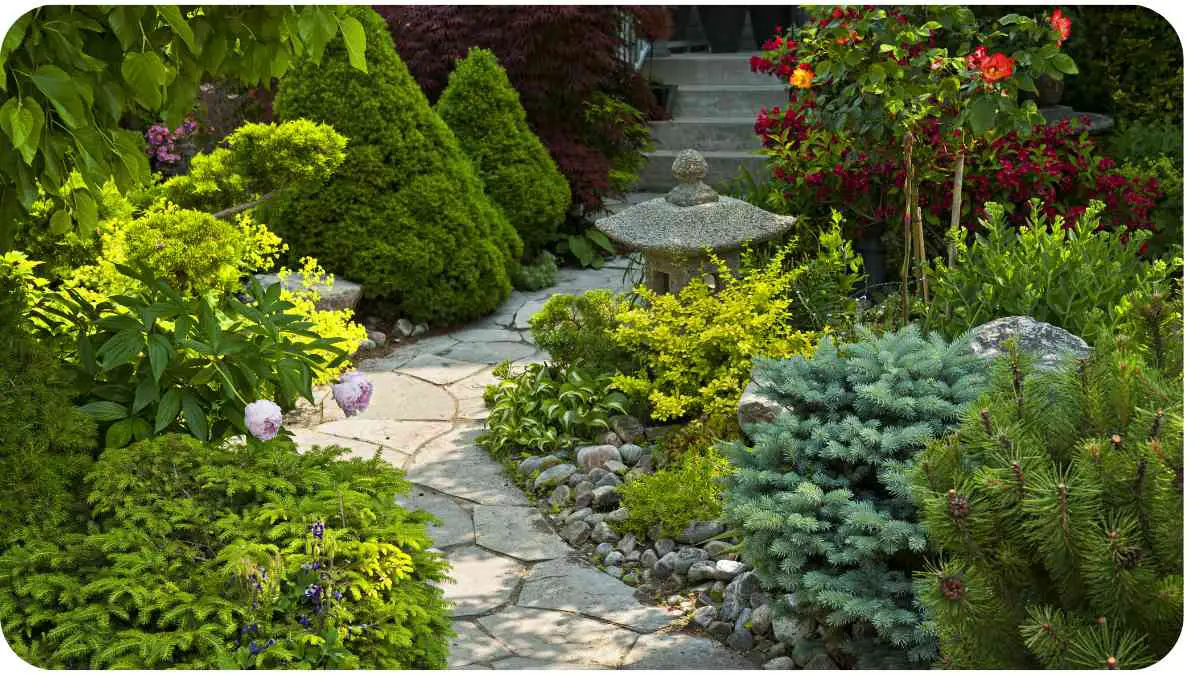Garden stepping stones are more than just practical paths through your garden; they’re also charming elements that add personality and character to your outdoor space. But even the most well-laid stones can encounter problems over time. Understanding and addressing these common issues is key to maintaining the beauty and functionality of your garden paths.
In this article, we’ll delve into the most frequent problems with garden stepping stones and provide actionable solutions. Whether you’re dealing with shifting stones, pesky weeds, or slippery surfaces, we’ve got you covered. With a blend of professional tips and personal anecdotes, we’ll guide you through fixing these issues to keep your garden looking its best.
| Takeaway |
|---|
| Garden stepping stones enhance both the functionality and aesthetics of your outdoor space. |
| Common issues include shifting stones, weeds, cracks, and slippery surfaces. |
| Stabilize shifting stones by improving the base layer with gravel and sand. |
| Prevent weeds by using landscape fabric and applying natural or chemical weed control methods. |
| Fix minor cracks with concrete filler and replace severely damaged stones for a uniform look. |
| Make slippery stones safer by applying anti-slip coatings or texturing the surface for better grip. |
| Regular maintenance, including cleaning and seasonal checks, helps prolong the life of your stepping stones. |
Understanding the Importance of Garden Stepping Stones

Benefits of Garden Stepping Stones
Garden stepping stones are a fantastic addition to any outdoor space. They provide:
- Functional Pathways: Stepping stones create clear, defined paths, making it easier to navigate your garden without damaging plants or disturbing soil.
- Aesthetic Appeal: They can transform a plain garden into a picturesque landscape, adding texture and interest.
- Enhanced Safety: Properly placed stones help prevent muddy footprints and provide stable footing, reducing the risk of slips and falls.
To prevent potential pitfalls, follow expert advice on how to avoid garden design mistakes and make the most of your outdoor space while enhancing its beauty and functionality.
Types of Garden Stepping Stones
Stepping stones come in various materials, each offering unique benefits:
- Concrete: Durable and customizable, ideal for high-traffic areas.
- Natural Stone: Offers a rustic, organic look, though it may require more maintenance.
- Recycled Materials: Eco-friendly options like glass or rubber, perfect for those looking to repurpose materials.
Common Problems with Garden Stepping Stones
Shifting or Sinking Stones
One of the most common issues with stepping stones is that they can shift or sink over time. This often happens due to:
- Poor Base Layer: Insufficient support beneath the stones can lead to instability.
- Soil Movement: Natural soil compaction and erosion can cause stones to shift.
Weeds Growing Between Stones
Weeds can be a nuisance, sprouting between your stones and disrupting the clean look of your path. They thrive in the small spaces between stones and can spread quickly if not managed.
For those looking to address common garden issues, the right stepping stone placement can enhance your yard. Learn more by following these hardscape renovation tips to fix uneven patio pavers and enjoy a smoother, more aesthetically pleasing outdoor experience.
Cracked or Broken Stones
Over time, stepping stones can crack or break due to:
- Weather Conditions: Extreme temperatures and moisture can weaken stones.
- Heavy Traffic: High foot traffic or heavy objects can cause damage.
Slippery Surfaces
Stepping stones can become slippery, especially when wet. This can pose a safety hazard and detract from the aesthetic appeal of your garden.
Solutions for Shifting or Sinking Stones

Improving Base Layer Support
A strong base layer is crucial for stability. To improve your base:
- Excavate the Area: Remove the existing stones and dig out a trench for the new base.
- Add a Layer of Gravel: Place a layer of gravel or crushed stone for drainage and stability.
- Level the Surface: Ensure the base is level before placing the stones back.
When transforming your garden, landscaping plants can help boost aesthetic appeal. Understanding the top landscaping plants for your garden allows you to make informed decisions, ensuring your garden looks beautiful and cohesive year-round with the right plant selections.
Using Sand and Gravel Effectively
Combining sand and gravel can help stabilize your stepping stones:
- Gravel: Provides a solid base and good drainage.
- Sand: Helps level the stones and fill gaps, reducing shifting.
Table 1: Best Materials for Base Layer
| Material | Purpose | Benefits |
|---|---|---|
| Gravel | Base support | Provides stability and drainage |
| Sand | Leveling and gap-filling | Helps secure stones and fill gaps |
| Concrete Base | Permanent base | Long-lasting support for heavy use |
Managing Weeds Between Stepping Stones
Preventive Measures
Preventing weeds from growing between stones can save you time and effort:
- Landscape Fabric: Lay down fabric before placing stones to block weed growth.
- Regular Maintenance: Regularly check and remove weeds before they can establish.
Natural and Chemical Weed Control
If weeds do appear, there are several ways to address them:
- Natural Methods: Use vinegar or boiling water to kill weeds.
- Chemical Herbicides: Selective herbicides can target weeds without harming nearby plants.
Table 2: Comparison of Weed Control Methods
| Method | Pros | Cons |
|---|---|---|
| Landscape Fabric | Long-lasting, prevents weed growth | Can be costly, requires installation |
| Vinegar | Natural and safe | Needs frequent application |
| Boiling Water | Effective and quick | Can harm nearby plants |
| Chemical Herbicides | Effective on a wide range of weeds | Can be harmful to environment |
Repairing and Replacing Cracked Stepping Stones
Quick Fixes for Minor Cracks
For small cracks, you can:
- Clean the Crack: Remove debris and dirt.
- Apply Concrete Filler: Use a concrete filler or epoxy to seal the crack.
When dealing with soggy areas in your garden, it’s important to identify the cause and choose effective solutions. If your soil is not draining properly, explore expert tips to improve soil drainage, preventing waterlogging and maintaining healthy plant growth.
When to Replace a Stone
If a stone is too damaged:
- Check the Extent of Damage: If the damage is extensive, replacement may be necessary.
- Choose a Matching Stone: Select a stone that matches the existing ones for a uniform look.
Table 3: Common Causes of Cracks and Their Solutions
| Cause | Solution | Notes |
|---|---|---|
| Weather Conditions | Use sealants and weather-resistant materials | Prevents future damage |
| Heavy Traffic | Use durable materials and reinforce base | Reduces risk of cracking |
| Poor Installation | Reinstall stones with proper base | Ensures long-lasting stability |
Dealing with Slippery Stones
Anti-Slip Coatings
Anti-slip coatings can improve safety:
- Types: Look for coatings specifically designed for outdoor stone surfaces.
- Application: Follow manufacturer instructions for the best results.
Texturing the Surface for Better Grip
Texturing the surface of stones can enhance grip:
- Use a Wire Brush: Scrub the surface to create a rough texture.
- Apply Textured Sealant: Choose a sealant with added texture for extra grip.
Table 4: Best Materials for Non-Slip Coatings
| Coating Type | Features | Application |
|---|---|---|
| Epoxy-Based Coating | Durable and long-lasting | Ideal for high-traffic areas |
| Acrylic Coating | Quick-drying, versatile | Suitable for various stone types |
| Anti-Slip Additives | Added to existing sealants | Provides extra grip and safety |
Maintenance Tips for Long-Lasting Stepping Stones

Regular Cleaning Routine
Regular cleaning helps maintain the appearance and functionality of your stones:
- Remove Debris: Sweep or wash away dirt and leaves.
- Check for Damage: Inspect stones for any signs of wear or damage.
Uneven lawn growth is often a frustrating issue, but with proper care, you can remedy the situation. Discover the causes of uneven lawn growth and the steps to improve your lawn’s consistency for a lush, even, and visually appealing landscape.
Seasonal Maintenance Considerations
Different seasons can affect your stepping stones:
- Spring: Clean and check for winter damage.
- Autumn: Remove fallen leaves and debris to prevent staining.
Table 5: Ideal Cleaning Materials for Different Stone Types
| Stone Type | Recommended Cleaning Material | Notes |
|---|---|---|
| Concrete | Mild detergent and water | Avoid harsh chemicals |
| Natural Stone | pH-neutral cleaner | Prevents damage to stone surface |
| Recycled Materials | Eco-friendly cleaner | Maintains appearance without damage |
Conclusion
Garden stepping stones are a wonderful way to enhance your outdoor space, but they do require some maintenance and care. By addressing common issues such as shifting, weeds, cracks, and slippery surfaces, you can keep your garden paths looking beautiful and functional for years to come.
Implementing these solutions and tips will ensure that your stepping stones continue to provide both aesthetic appeal and practical use in your garden.
Further Reading
10 Common Questions People Ask Before Laying Stepping Stones
This article provides answers to frequently asked questions about laying stepping stones, including tips on materials, spacing, and installation techniques.
3 Common Problems and Solutions for Concrete Paving Stones
Explore common issues with concrete paving stones and practical solutions to address problems such as cracking, shifting, and drainage.
How to Lay Stepping Stones
A comprehensive guide on the step-by-step process of laying stepping stones, from preparing the ground to positioning and securing the stones.
FAQs
What is the best material for garden stepping stones?
The best material depends on your needs and aesthetic preferences. Concrete, natural stone, and recycled materials each offer different benefits. Concrete is durable and customizable, natural stone provides a rustic look, and recycled materials are eco-friendly.
How can I prevent stepping stones from shifting?
To prevent shifting, ensure you have a stable base layer of gravel and sand. Properly leveling the base and securing the stones with additional gravel around the edges can also help.
What should I do if weeds start growing between my stepping stones?
To manage weeds, use landscape fabric beneath the stones, regularly remove weeds by hand, or apply natural herbicides like vinegar. For persistent problems, consider a chemical herbicide as a last resort.
How do I fix a cracked stepping stone?
For minor cracks, clean the area and apply a concrete filler or epoxy. If the damage is extensive, replacing the stone may be necessary. Choose a new stone that matches the existing ones for a seamless look.
What can I do to make stepping stones less slippery?
To reduce slipperiness, apply anti-slip coatings or texturing treatments. You can also use a wire brush to roughen the surface of the stones, providing better traction.

Hi! My name is Hellen James, and I’m a landscape designer in Los Angeles. I’ve been working with homeowners and businesses to help them improve the look of their properties for over 10 years.

